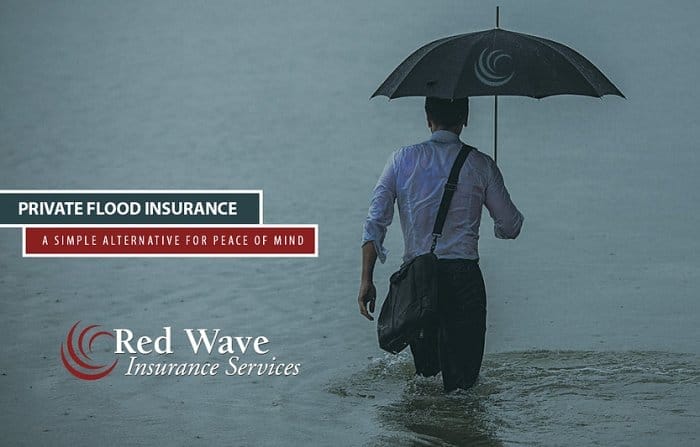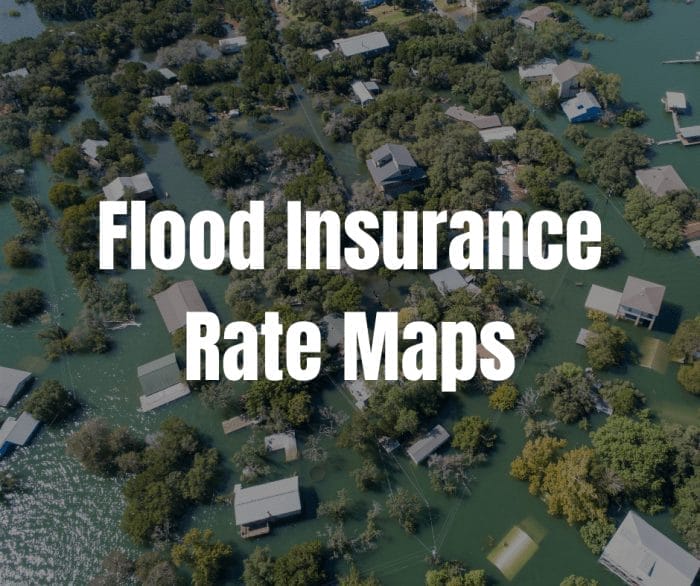In the face of rising flood insurance rates, businesses must take proactive measures to mitigate risk and ensure their long-term viability. This comprehensive guide delves into the factors driving the surge in rates, effective flood risk assessment methods, and practical mitigation strategies to minimize potential losses.
Moreover, it explores the significance of financial preparedness, business continuity planning, and collaboration with local authorities in flood preparedness and response.
With a focus on leveraging technology for improved flood risk management, adapting business operations to minimize risks, and developing long-term resilience strategies, this guide provides a roadmap for businesses to navigate the challenges posed by flood risks and emerge stronger.
Rising Flood Insurance Rates

The recent surge in flood insurance rates has significantly impacted businesses, raising concerns about affordability and financial stability. This trend is attributed to various factors, including climate change, natural disasters, and changing risk assessments.
Factors Contributing to Rising Rates
- Climate Change: As climate change intensifies, the frequency and severity of floods have increased, leading to more claims and higher payouts for insurance companies.
- Natural Disasters: Major natural disasters, such as hurricanes and floods, have resulted in extensive damage and claims, driving up insurance rates.
- Changing Risk Assessments: Insurers have updated their risk assessment models to reflect the changing flood risk landscape, resulting in higher rates for properties deemed to be at higher risk.
Evaluating Flood Risk for Businesses

Flood risk assessment is essential for businesses to protect their assets, operations, and financial stability. Floods can cause significant damage to property, disrupt business operations, and lead to financial losses. Understanding and evaluating flood risk enables businesses to take proactive measures to mitigate potential impacts and ensure continuity of operations.There
are several methods for assessing flood risk for businesses:
Historical Data Analysis
Analyzing historical flood data, including records of past floods, flood heights, and affected areas, can provide valuable insights into flood risk. This data can help businesses identify areas prone to flooding, understand flood patterns, and assess the likelihood and severity of future floods.
Flood Maps
Flood maps developed by government agencies or reputable organizations provide detailed information about floodplains, flood zones, and flood risk levels. These maps can be used to determine the flood risk associated with a specific property or location. Businesses can use flood maps to make informed decisions about property selection, site planning, and flood mitigation measures.
Property Inspections
Conducting thorough property inspections can help identify physical characteristics that may increase flood risk. Factors such as elevation, proximity to water bodies, drainage conditions, and the presence of flood control structures should be evaluated. Property inspections can also reveal vulnerabilities in building structures and identify areas where flood mitigation measures can be implemented.
Floodplains and Flood Zones
Floodplains are areas adjacent to rivers, streams, or other water bodies that are prone to flooding. Flood zones are designated areas within floodplains that have different levels of flood risk. Understanding floodplains and flood zones is crucial for businesses as it helps them determine the potential flood hazard associated with a particular location.
Mitigation Strategies to Reduce Flood Risk
Businesses can take proactive steps to mitigate flood risk and protect their operations. These measures can be structural, non-structural, or a combination of both.
Structural Flood Mitigation Measures
Structural flood mitigation measures involve physical modifications to buildings and infrastructure to reduce the impact of flooding. Examples include:
- Elevating Buildings: Raising buildings above the anticipated flood level can help prevent floodwaters from entering the structure.
- Floodproofing Buildings: This involves modifying buildings to make them resistant to flood damage, such as using waterproof materials and installing flood barriers.
- Installing Floodwalls and Levees: These structures are designed to prevent floodwaters from entering an area.
- Improving Drainage Systems: Proper drainage can help reduce the risk of flooding by efficiently channeling excess water away from buildings and infrastructure.
Non-Structural Flood Mitigation Measures
Non-structural flood mitigation measures involve policies, regulations, and practices that aim to reduce flood risk. Examples include:
- Land Use Planning and Zoning: Regulating the use of land in flood-prone areas can help reduce the risk of development in high-risk zones.
- Floodplain Management: This involves managing the natural functions of floodplains to reduce flood risk, such as preserving wetlands and restoring natural waterways.
- Flood Warning Systems: These systems provide timely alerts to businesses and communities in flood-prone areas, allowing them to take necessary precautions.
- Emergency Preparedness and Response Plans: Having a plan in place for responding to floods can help businesses minimize damage and recover more quickly.
Developing a Comprehensive Flood Mitigation Plan
Developing a comprehensive flood mitigation plan is crucial for businesses in flood-prone areas. This plan should include:
- Risk Assessment: Identifying and assessing the flood risk to the business, including the potential for flooding, the severity of flooding, and the potential impact on operations.
- Mitigation Measures: Identifying and implementing appropriate structural and non-structural flood mitigation measures to reduce the risk of flooding and its impact on the business.
- Emergency Preparedness and Response Plan: Developing a plan for responding to floods, including evacuation procedures, communication protocols, and recovery strategies.
- Regular Review and Updates: Regularly reviewing and updating the flood mitigation plan to ensure it remains effective and addresses changing conditions.
Financial Preparedness for Flood Events
In flood-prone areas, businesses face the constant threat of financial losses due to flood damage. Financial preparedness is crucial for ensuring the survival and continuity of operations in the face of such events. This involves implementing measures to mitigate the financial impact of floods and having a plan in place to recover from flood-related losses.
The Role of Flood Insurance
Flood insurance plays a vital role in protecting businesses from financial losses caused by flood damage. It provides coverage for physical damage to property, business interruption, and loss of inventory. Flood insurance is typically purchased through the National Flood Insurance Program (NFIP) or private insurers.
Obtaining Flood Insurance
To obtain flood insurance, businesses need to contact an insurance agent or company that offers flood insurance. The insurance company will assess the flood risk of the business property and determine the appropriate coverage amount and premium. Businesses should carefully review the policy terms and conditions to understand the coverage provided and any exclusions or limitations.
Calculating Flood Insurance Coverage Amounts
Determining the appropriate flood insurance coverage amount is crucial to ensure adequate protection. Businesses should consider the following factors when calculating coverage amounts:
- Replacement cost of the business property and its contents.
- Potential loss of income during the period of business interruption.
- Additional expenses incurred as a result of the flood, such as cleanup costs.
Businesses should work with their insurance agent or company to determine the coverage amount that best meets their needs.
Business Continuity Planning for Floods

Businesses face significant risks from floods, including property damage, disruption of operations, and loss of revenue. A well-developed business continuity plan (BCP) can help businesses prepare for and respond to floods, minimizing the impact on their operations and finances.explanatory
paragraphDeveloping a flood-specific BCP involves several key steps:
Identifying Critical Operations
Identifying critical operations and processes that must be maintained during a flood is essential. This includes identifying the minimum resources and personnel required to continue operations and the timeframe within which these operations must be restored.
Establishing Backup Locations
Establishing backup locations or facilities that can serve as alternative operating sites in the event of a flood is crucial. These locations should be geographically dispersed and equipped with the necessary resources to support essential operations.
Implementing Communication Protocols
Developing clear and concise communication protocols for employees, customers, and suppliers is vital. This includes establishing a central point of contact, defining communication channels, and ensuring that all stakeholders have access to up-to-date information during a flood event.
Employee Training and Drills
Conducting regular employee training and drills helps ensure that employees are familiar with the BCP and know their roles and responsibilities during a flood. Drills should simulate real-life flood scenarios and test the effectiveness of the BCP.
Collaborating with Local Authorities and Emergency Services

Businesses can play a crucial role in enhancing community resilience to floods by collaborating with local authorities and emergency services. Collaboration enables the sharing of resources, expertise, and information to develop effective flood preparedness and response plans.
Successful partnerships between businesses and emergency services have demonstrated the benefits of collaboration. For instance, in the aftermath of Hurricane Katrina, many businesses provided shelter, food, and supplies to affected communities, working closely with local authorities to coordinate relief efforts.
Community Engagement and Public Education
Engaging the community and educating the public about flood risks and preparedness measures are vital aspects of enhancing flood resilience. Businesses can play a proactive role in raising awareness and promoting flood safety practices through various initiatives:
- Flood Risk Assessments: Businesses can conduct flood risk assessments to identify vulnerable areas and potential impacts, sharing this information with local authorities and the community.
- Public Forums and Workshops: Organizing public forums and workshops allows businesses to share their knowledge and expertise on flood preparedness with community members, promoting dialogue and raising awareness.
- Educational Materials: Developing educational materials, such as brochures, posters, and online resources, can help businesses effectively communicate flood risks and safety measures to the public.
- Community Emergency Response Teams: Businesses can support the formation of community emergency response teams, providing training and resources to empower community members to respond effectively to flood events.
Leveraging Technology for Flood Risk Management

In an era defined by digital transformation, businesses have the opportunity to harness the power of technology to enhance their flood risk management strategies. Embracing technological advancements can significantly improve preparedness, response, and recovery efforts during flood events.
IoT Sensors and Data Analytics
The Internet of Things (IoT) has revolutionized data collection and analysis, providing real-time insights into various environmental parameters. IoT sensors can be strategically placed in flood-prone areas to monitor water levels, flow rates, and rainfall intensity. This data can be transmitted wirelessly to a central platform, where advanced analytics tools can identify patterns, predict flood risks, and issue early warnings.
By leveraging IoT technology, businesses can gain valuable lead time to implement preventive measures and minimize potential damages.
Predictive Modeling for Flood Preparedness
Predictive modeling techniques, such as machine learning and artificial intelligence (AI), play a crucial role in enhancing flood preparedness. These models can analyze historical data, current conditions, and weather forecasts to generate accurate predictions about the likelihood, severity, and timing of flood events.
This information enables businesses to proactively allocate resources, develop contingency plans, and communicate risks effectively to stakeholders. Predictive modeling also supports decision-making during flood emergencies, helping businesses respond swiftly and efficiently.
GIS Mapping and Mobile Apps for Flood Risk Assessment
Geographic Information Systems (GIS) mapping tools provide a comprehensive visual representation of flood risk zones, vulnerable infrastructure, and critical assets. Businesses can utilize GIS data to identify high-risk areas, assess potential impacts, and develop targeted mitigation strategies. Additionally, mobile apps can be developed to provide real-time flood warnings, evacuation routes, and access to emergency services.
These apps empower employees, customers, and the community to stay informed and take appropriate actions during flood events.
Adapting Business Operations to Flood Risks

To mitigate the impacts of flood risks on business operations, it’s crucial to implement strategies that minimize exposure and enhance resilience. This involves reducing reliance on flood-prone areas, diversifying supply chains, and embracing remote work options.
Adapting business operations to flood risks is a multifaceted approach that requires careful planning and execution. By taking proactive measures to minimize exposure, diversify operations, and enhance resilience, businesses can safeguard their assets, maintain continuity, and minimize disruptions caused by flooding.
Reducing Reliance on Flood-Prone Areas
Businesses located in flood-prone areas face a higher risk of disruptions and damages during flood events. To reduce this risk, consider relocating operations to higher ground or areas less susceptible to flooding. If relocation is not feasible, implement flood-proofing measures such as elevating critical infrastructure and installing flood barriers to minimize the impact of flooding.
Diversifying Supply Chains
Relying on a single supplier or a limited number of suppliers can increase the risk of disruptions in the event of a flood. To mitigate this risk, diversify your supply chain by working with multiple suppliers located in different geographic areas.
This strategy ensures that if one supplier is affected by a flood, the business can continue operations by sourcing materials or products from alternative suppliers.
Implementing Remote Work Options
In areas prone to flooding, implementing remote work options can help businesses maintain continuity during flood events. By allowing employees to work from home or alternative locations, businesses can minimize the impact of flooding on productivity and operations. This strategy also enhances employee safety by reducing the need for commuting during hazardous conditions.
Examples of Successful Adaptation
Several businesses have successfully adapted their operations to cope with flood risks. For instance, Amazon has implemented a comprehensive flood risk management plan that includes relocating warehouses to higher ground, elevating critical infrastructure, and implementing remote work options. As a result, Amazon has minimized the impact of flooding on its operations and maintained business continuity.
Long-Term Resilience Strategies for Flood-Prone Businesses

In flood-prone regions, businesses face ongoing threats from rising water levels and extreme weather events. Developing long-term resilience strategies is crucial to ensure their survival and success. This involves incorporating sustainability, green infrastructure, and climate adaptation measures into their operations, while aligning flood resilience with corporate social responsibility and sustainability initiatives.explanatory
paragraph
Importance of Long-Term Resilience Strategies
- Floods can cause extensive damage to infrastructure, equipment, and inventory, leading to business disruption and financial losses.
- Resilience strategies help businesses withstand and recover from flood events, minimizing downtime and ensuring continuity of operations.
- Long-term resilience planning enables businesses to adapt to changing flood risks and climate patterns, ensuring their long-term viability.
Role of Sustainability, Green Infrastructure, and Climate Adaptation
- Sustainable practices, such as reducing water consumption and waste generation, can help businesses mitigate their contribution to climate change and reduce their vulnerability to flooding.
- Green infrastructure, like rain gardens and permeable pavements, can help manage stormwater runoff, reducing the risk of flooding.
- Climate adaptation measures, such as elevating critical infrastructure and implementing flood warning systems, can help businesses prepare for and respond to flood events.
Integrating Flood Resilience into Corporate Social Responsibility and Sustainability Initiatives
- Businesses can demonstrate their commitment to sustainability and social responsibility by prioritizing flood resilience in their operations.
- Integrating flood resilience into corporate policies and practices can enhance a business’s reputation and attract socially conscious customers and investors.
- Collaboration with local communities and stakeholders can help businesses develop flood resilience strategies that align with broader sustainability goals.
Case Studies of Businesses Navigating Flood Risks
Businesses worldwide are increasingly facing the challenges posed by flood risks. By examining case studies of businesses that have successfully navigated these risks and emerged stronger, we can identify strategies and best practices that can help other businesses mitigate flood impacts and ensure business continuity.
These case studies showcase the resilience and adaptability of businesses in the face of flood risks. They highlight the importance of comprehensive flood risk management strategies, proactive mitigation measures, and effective business continuity planning. By learning from the experiences of these businesses, other organizations can better prepare for and respond to flood events, minimizing disruptions and safeguarding their operations.
Key Strategies and Best Practices
- Comprehensive Flood Risk Assessment: Businesses that have successfully navigated flood risks prioritize comprehensive flood risk assessments. They evaluate their facilities, supply chains, and operations to identify potential vulnerabilities and areas at risk. This assessment helps them understand the likelihood and severity of flood events and develop targeted mitigation strategies.
- Flood Mitigation Measures: Implementing flood mitigation measures is crucial for reducing the impact of flood events. These measures can include elevating critical infrastructure, installing flood barriers, and implementing flood-resistant construction techniques. By investing in these measures, businesses can minimize damage to their facilities and equipment, reducing downtime and financial losses.
- Business Continuity Planning: Effective business continuity planning is essential for ensuring operations can continue during and after flood events. Businesses that have successfully navigated flood risks have developed comprehensive plans that Artikel procedures for responding to flood warnings, evacuating personnel, and resuming operations after a flood event. These plans help minimize disruptions and ensure a rapid return to normal operations.
- Collaboration with Local Authorities and Emergency Services: Collaborating with local authorities and emergency services is vital for staying informed about flood risks and accessing resources during flood events. Businesses that have successfully navigated flood risks establish strong relationships with these entities, ensuring they receive timely warnings, assistance during emergencies, and access to recovery resources.
- Leveraging Technology for Flood Risk Management: Technology plays a significant role in flood risk management. Businesses that have successfully navigated flood risks utilize technology to monitor flood conditions, predict flood events, and communicate with stakeholders during emergencies. These technologies help businesses stay informed, make timely decisions, and respond effectively to flood risks.
Lessons and Insights for Other Businesses
- Prioritize Flood Risk Assessment and Mitigation: Conducting comprehensive flood risk assessments and implementing effective mitigation measures is crucial for reducing the impact of flood events. Businesses should invest in these measures to safeguard their operations and minimize financial losses.
- Develop Comprehensive Business Continuity Plans: Having a well-defined business continuity plan is essential for ensuring operations can continue during and after flood events. Businesses should regularly review and update their plans to ensure they remain effective and aligned with changing circumstances.
- Collaborate with Local Authorities and Emergency Services: Establishing strong relationships with local authorities and emergency services is vital for accessing resources and staying informed about flood risks. Businesses should actively engage with these entities to build trust and ensure they receive timely information and assistance during flood events.
- Leverage Technology for Flood Risk Management: Technology can significantly enhance flood risk management efforts. Businesses should explore and adopt technologies that help them monitor flood conditions, predict flood events, and communicate effectively during emergencies.
Last Word

By implementing these strategies and fostering a culture of flood preparedness, businesses can mitigate the impact of rising flood insurance rates and ensure their continued success in the face of an increasingly uncertain climate.
Frequently Asked Questions
Why are flood insurance rates increasing?
Factors contributing to the surge in flood insurance rates include climate change, natural disasters, and changing risk assessments.
How can businesses assess their flood risk?
Businesses can assess their flood risk through historical data analysis, flood maps, and property inspections.
What are some flood mitigation strategies for businesses?
Flood mitigation strategies include elevating buildings, installing flood barriers, and implementing flood warning systems.
How can businesses financially prepare for flood events?
Businesses can financially prepare for flood events by obtaining flood insurance and calculating appropriate coverage amounts.
What is the significance of business continuity planning for floods?
Business continuity planning for floods helps businesses identify critical operations, establish backup locations, and implement communication protocols to ensure continued operations during and after a flood.



